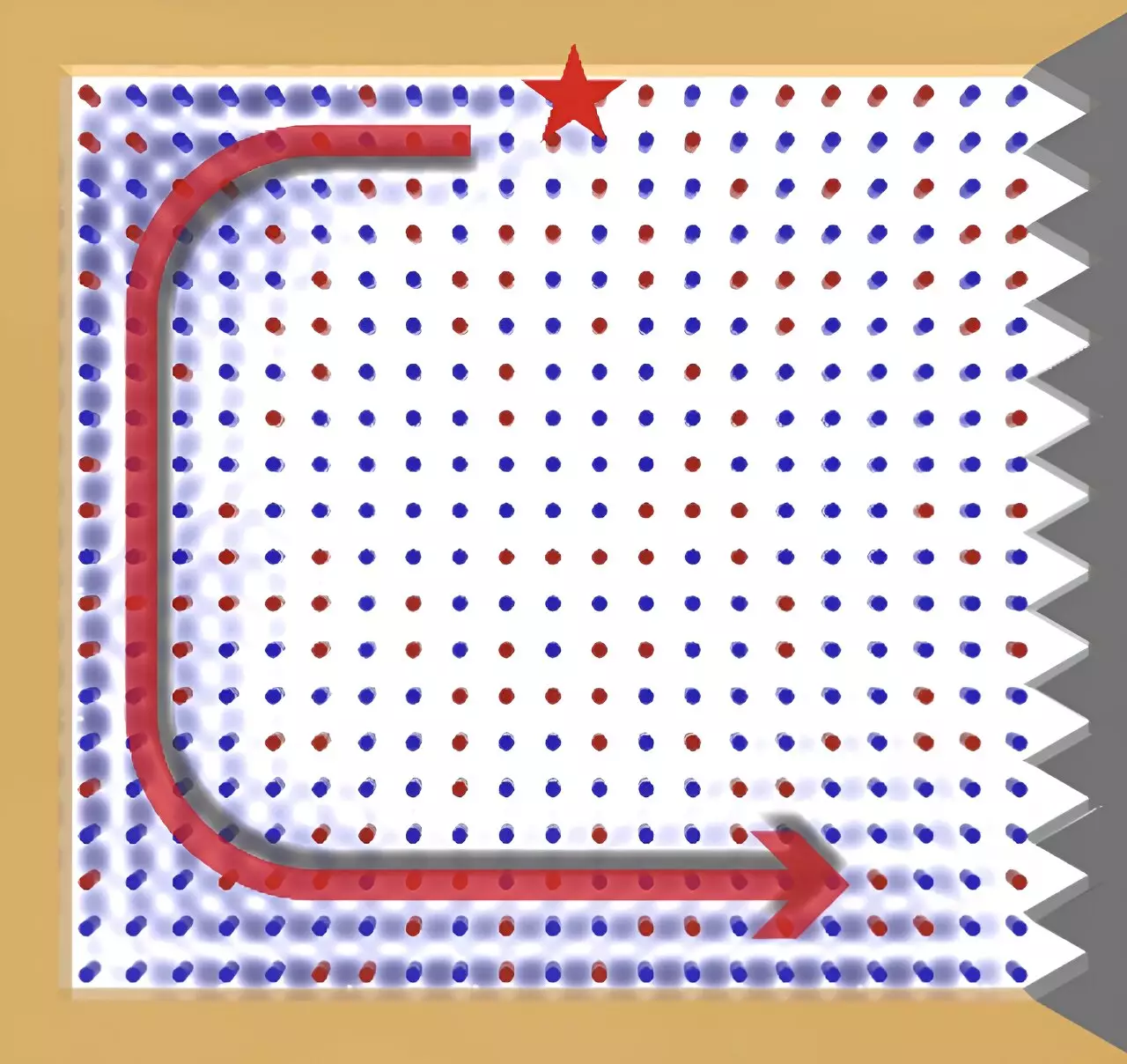Photonic alloys, materials that combine multiple photonic crystals, have shown great promise in controlling the propagation of electromagnetic waves, particularly in the development of waveguides. However, a common issue with these materials is light backscattering, which limits their effectiveness in transmitting data and energy efficiently. Researchers at Shanxi University and the Hong Kong University of Science and Technology have recently made a significant breakthrough in this field by fabricating a new photonic alloy with topological properties that eliminate light backscattering. This innovation could lead to the development of new topological photonic crystals with enhanced performance.
The research team led by Lei Zhang introduced the concept of topological photonic alloys, a nonperiodic material that combines nonmagnetized and magnetized rods in a 2D photonic crystal configuration. By creating photonic alloys that sustain chiral edge states in the microwave regime, they were able to prevent light backscattering and enable the propagation of microwaves without interference.
Experimental Setup
The researchers used yttrium iron garnet (YIG) rods and magnetized YIG rods in their experimental setup, utilizing a vector network analyzer to study the intensity and phase of electromagnetic waves. By incorporating a metal cladding with a Chern number of zero and a microwave absorber to suppress boundary states, they were able to observe the emergence of a topological edge state at the boundary of the photonic material.
The experiments conducted by Zhang and his team demonstrated that topological photonic alloys can exhibit unique properties even with a low doping concentration of magnetized rods, without the need for strict ordering. This discovery suggests that chiral edge states can be generated without breaking time reversal symmetry, opening up new possibilities for the practical realization of topological edge states in crystal structures.
Future Directions
Moving forward, the researchers plan to explore multicomponent topological photonic alloy systems to further expand the capabilities of these materials. By manipulating various parameters in multi-component systems, they aim to uncover a wider range of effects and potential applications in photonics. Additionally, they intend to investigate the possibility of extending their findings to optical frequencies, paving the way for the development of innovative photonic devices with enhanced light manipulation abilities.
The development of topological photonic alloys represents a significant advancement in the field of waveguide technology, offering new possibilities for controlling electromagnetic wave propagation and eliminating light backscattering. The research conducted by Lei Zhang and his colleagues has laid the foundation for future studies in this area, with the potential to revolutionize the design and functionality of photonic materials. By exploring the unique properties of these alloys and pushing the boundaries of current technology, researchers are on the brink of unlocking the full potential of photonic devices in various applications.


Leave a Reply
You must be logged in to post a comment.